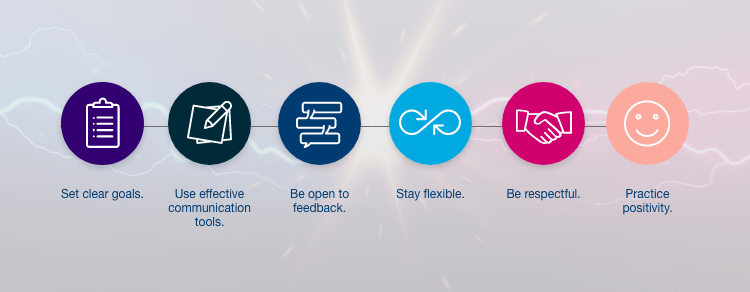Collaboration is an essential part of the design process. It encourages the sharing of ideas, feedback, and resources, which leads to better designs. When done effectively, collaboration improves efficiency, effectiveness, and quality.
Why is collaboration in design important?
Collaboration saves time, supports higher morale, and produces a better result. Different team members, such as writers, editors, video, developers, and project managers, bring varied talents and perspectives to the table. Everyone working together to complete a project:
- Generates new ideas: When you work with others, you come up with concepts you would not think of alone. New perspectives can lead to new and innovative designs.
- Solves problems: More minds working on the same problem from different angles means more effective solutions.
- Improves your work: Collaboration involves give and take, which can improve the overall design and make it more user-friendly.
- Builds relationships: Working together helps team members get to know each other better. These relationships help you learn and grow, personally and professionally.
- Reduces stress: Sharing the workload and supporting one another can reduce the overall stress for everyone involved, opening the door for more creative thinking.
- Speeds the process: Your team can solve problems and provide your services more quickly.
“It’s about changing your perspective from working for to working with.”
—Ramsés Cabello, Sketch

How can my team collaborate effectively?
Effective collaboration requires clear communication. This means sharing ideas, giving and receiving feedback, and resolving any conflicts that arise.
- Set clear goals. Be specific about what you want to achieve. Identify key deliverables, deadlines, and each person’s responsibilities.
- Use effective communication tools. These could include in-person conversations, email, instant messaging, video conferencing, or online whiteboard sessions. Use whatever works best for your team.
- Be open to feedback. Listen to others’ ideas and suggestions respectfully, even if you do not agree with them. Ideas from others often open you to new ideas of your own.
- Stay flexible. Be willing to compromise and find the best solution for the project.
- Be respectful. Treat your team members and clients with courtesy and understanding.
- Practice positivity. Maintain a positive attitude, and pitch in where you can.
Design collaboration is an essential part of any industry. It allows teams to share ideas, get feedback, and iterate on designs. Projects just work better with a range of ideas and perspectives.
“Design collaboration is a process in which different people with different skill sets come together to share the entire workload of a project with an aim to achieve better results with profound impacts.”
—Manish Vyas, Peerbits